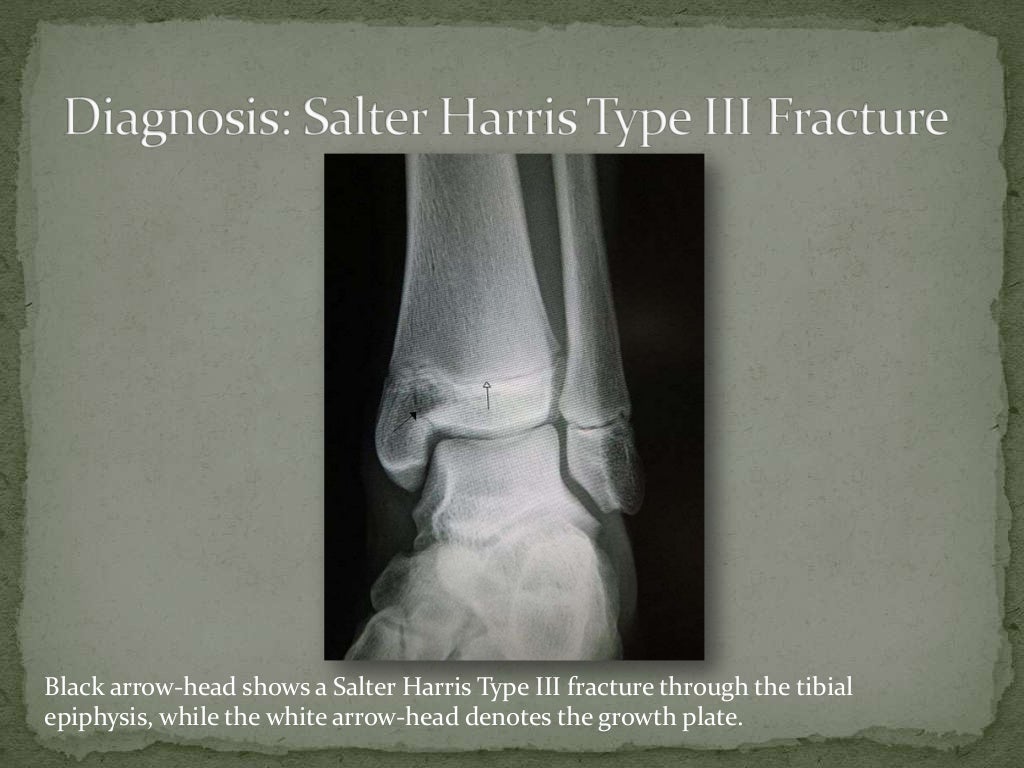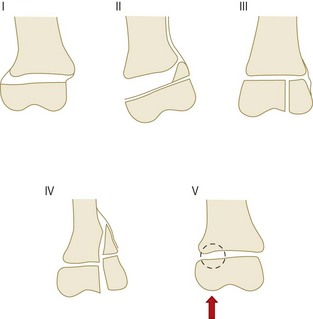
The physis is weakest at the junction between the proliferative (aka maturation) and hypertrophic zones, and the hypertrophic zone itself is structurally weak due to the large cell:matrix ratio. It is is weaker than the surrounding ligaments and bone, and therefore most susceptible to injury.

All Salter-Harris fractures, by definition, involve theĮpiphyseal plate (red arrow), which is wider than normal in this case.The physis allows long bones to continue to grow in length after birth and consists of five zones. There is a longitudinal lucency (whie arrows) in theĮpiphysis of the great toe that represents a fracture. Involve the epiphyseal plate, even though those fractures may not be visible.įor this same photo without the arrows, click here All Salter-Harris fractures, by definition, There is a longitudinal lucency (blue arrow) in theĮpiphysis that represents a fracture. Closure of only a portion of the plate resulting in angular deformity.Primary complication is growth plate disturbance.Greater risk for complication comes with fracture of distal tibia followed by distal femur.In general, the higher the number, the more likely the complication so that Salter-Harris types Iv and V have the highest associated complications.Ultrasound can be helpful in infants whose cartilage has not yet ossified.CT with multiplanar reconstruction has been used in problem cases.Conventional radiography remains study of first choice.Depending on the type of fracture, some displacement of the epiphysis or corner sign (Thurston-Holland fragment).Structures involved in Salter-Harris fractures These injuries have the worst prognosis of the Salter-Harris fractures.Initial diagnosis may be difficult and not made until complication of growth disturbance at epiphyseal plate occurs resulting in angular deformities.Compression or crushing injury of epiphyseal plate.Since these fractures involve the growing layer of cartilage, growth disturbance can result.Since it, too, involves the epiphysis, the articular cartilage can be damaged.Involves the epiphyseal plate, metaphysis and epiphysis.

A Tillaux fracture of the ankle is a Salter-Harris III fracture.Since the epiphysis is involved, damage to the articular cartilage can occur.Involves the epiphyseal plate and the epiphysis itself.Small corner of metaphysis that is usually fractured produces the “corner sign”.Involves both the epiphyseal plate and the metaphysis.Most common Salter-Harris fracture -85%.Slipped capital femoral epiphysis (SCFE) is an example of a Salter-Harris I fracture.




 0 kommentar(er)
0 kommentar(er)
